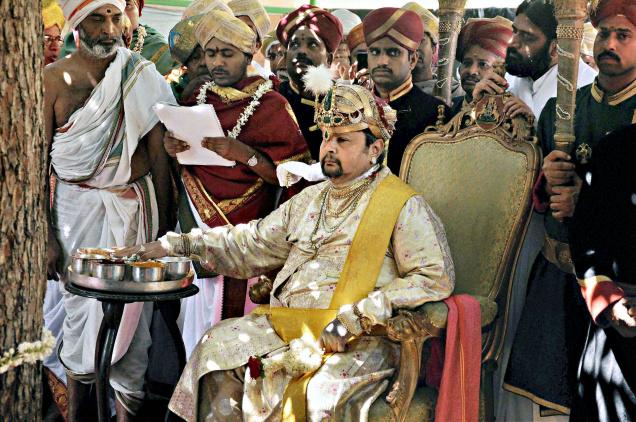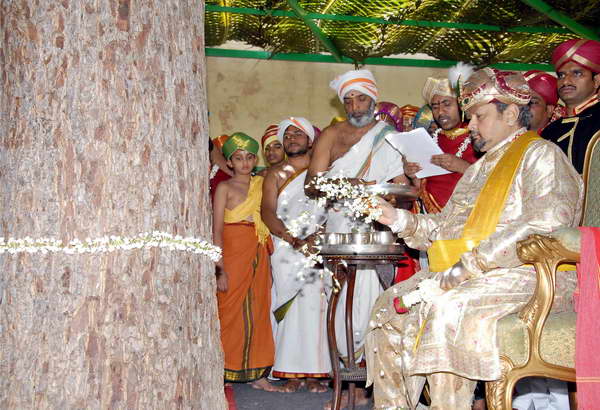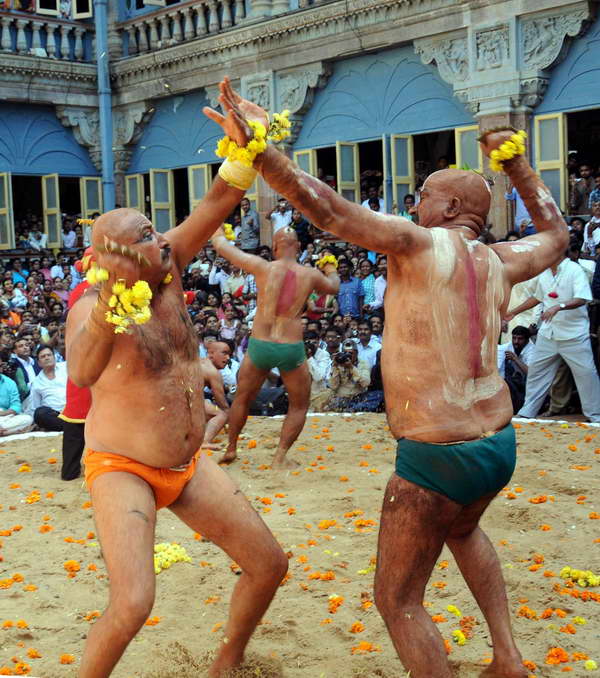MYSORE, October 15: “…. the cavalry was mounted on horses fully caparisoned and on their foreheads plates, some of them silver but most of them gilded; the horsemen were dressed in quilted tunics. The elephants, in the same way, are covered with caparisons of velvet. On the back of each are three or four men, dressed in their quilted tunics…”
Descriptions of the king’s procession held after nine days of feasting by Domingo Paes during his visit to the Kingdom of Bisnagar (Vijayanagar) and reckoned to be written in the 1520s. Almost 500 years later, the images of a bygone era unfolded in the precincts of the Amba Vilas Palace to mark the Vijayadashmi procession of the Wadiyars of Mysore here on Monday.
Complete with caparisoned elephants and horses, camels and cows and attendants dressed in traditional wear, it was a throwback to a bygone era when the scion of the royal family Srikantadutta Narasimharaja Wadiyar, former MP, completed the various rituals associated with Dasara.
After a visit to the temple within the palace premises comes the private durbar and the ascension to the golden throne in the presence of other members of the royal family.
These two customs take place only during the 10-day Dasara festivities.
A wrestling bout called ‘Vajra Mushti Kalaga’ was witnessed by Mr. Wadiyar — a rare form of wrestling where combatants (jettys) assault each other with clenched fists. Armed with spikes on their fingers, they fight until first blood, with the one who drew it emerging triumphant.
This was followed by the procession — complete with royal paraphernalia including palace elephants, camels, horses and cows — that ended at the Bhuvaneshwari temple inside the palace fort for the customary rituals or the Shammi Puja after which came the return procession equated with ‘victory procession’.
The procession had descendants of the former employees of the Mysore Palace from Gejjagalli. Palace priests pointed out that Shammi Puja was the most important element of Vijayadashami; the Pandavas (of Mahabharatha) performed the ritual after retrieving their weapons which they hid in a Shammi tree, after returning from their exile.
Though it is customary for Mr. Wadiyar to be seated in a silver chariot drawn by a pair of cows or bullocks, he used his private car to complete the formalities owing to ill-health.
Dressed in regal costumes complete with headgear, he completed the traditions inherited by his forefathers from the Vijayanagar emperors. Even though this is a private celebration, the Royal Dasara has its own allure and mystique to add to the 10-day festivities in Mysore. It is the continuation of a rich legacy spanning over 500 years.



